#panthenol
Explore tagged Tumblr posts
Text
Frosch Senses Sensitiv-Dusche
[Werbung]
Die Granatapfel Sensitiv-Dusche von @frosch_de teste ich gerade im Rahmen eines Produkttests – für mich eine gute Gelegenheit, ein Duschgel auszuprobieren, das für empfindliche Haut entwickelt wurde und dabei auf zurückhaltende Rezepturen setzt.

Die Textur ist gelartig und leicht, lässt sich gut auf der Haut verteilen und sorgt für ein sanftes Reinigungsgefühl. Es entsteht kein Schaum, das Produkt legt sich dünn auf die Haut und lässt sich ebenso leicht wieder abspülen.
Der Duft ist fruchtig und erinnert mich an frisch aufgeschnittenen Granatapfel – natürlich und klar, ohne überflüssige Duftbeimischungen. Für mich ist es ein angenehm unaufdringlicher Geruch, der gut zum puren Charakter dieser Pflege passt.
Nach dem Duschen fühlt sich meine Haut weich an und wirkt gut durchfeuchtet. Ich habe nicht das Bedürfnis eine Pflege hinterherzulegen, weil sich die Haut ausgeglichen und gepflegt anfühlt.
Positiv fällt mir zudem die Zusammensetzung auf: keine Parabene, kein Mikroplastik, keine Farbstoffe.
Stattdessen setzt Frosch auf pflanzenbasierte Inhaltsstoffe wie Granatapfel-Extrakt, Glycerin und Panthenol, die sanft reinigen und die Haut dabei unterstützen, Feuchtigkeit zu bewahren.
Die pH-hautneutrale Formel trägt dazu bei, dass die Haut im Gleichgewicht bleibt. Auch bei der Verpackung wird mitgedacht – die Flasche besteht zu 100 % aus recyceltem Plastik, und durch den separat erhältlichen Nachfüllbeutel lässt sich zusätzlich Verpackung sparen.
Ein besonderes Detail: In der Formulierung wird ein pflanzenbasiertes Tensid verwendet – Sunfloweroyl Methylglucamide – das für seine besonders milde Reinigungswirkung bekannt ist und in herkömmlichen Duschgels kaum zu finden ist.
Für alle, die eine Dusche suchen, die sensibel mit Haut und Umwelt umgeht, ohne viel Aufhebens um sich zu machen, ist dieses Produkt definitiv einen Versuch wert.
#froschsenses#produkttest#granatapfelduft#sensitivpflege#veganeskosmetik#glycerin#panthenol#cleanbeauty#recycelteverpackung#drogerieliebe#greenbeauty#naturkosmetik#sunfloweroylmethylglucamide#frosch#FroschSensesSensitivDusche
0 notes
Text
What Does Panthenol Do For The Skin? A Complete Guide
Does your skin feel worn out, like it’s struggling to keep up with your busy life? Maybe it’s persistent redness that won’t fade, dryness that feels impossible to soothe, or that unmistakable lack of vibrancy. If so, panthenol might be what your routine is missing. More than just a hydrator, panthenol works to calm irritation, support your skin’s barrier natural function and restore much-needed…
0 notes
Text
Panthenol Prices Trend | Pricing | News | Database | Chart

Panthenol prices a derivative of pantothenic acid, commonly known as vitamin B5, has garnered significant attention across various industries due to its multifaceted applications. This versatile compound finds use in cosmetics, pharmaceuticals, and personal care products, driving its demand globally. The pricing dynamics of panthenol are influenced by a variety of factors, including raw material availability, production costs, regulatory standards, and market demand trends. Over recent years, the global market for panthenol has witnessed fluctuations in pricing, closely tied to changes in supply chain structures and evolving consumer preferences.
The production of panthenol relies heavily on the availability of its key raw materials, such as pantothenic acid. Any disruption in the supply of these materials, whether due to geopolitical tensions, trade restrictions, or natural calamities, can have a direct impact on production costs and, consequently, market prices. Manufacturers must also contend with the costs associated with maintaining high-quality standards, as panthenol is predominantly used in products applied directly to the skin or consumed in pharmaceutical formulations. This necessitates adherence to stringent quality control measures, which can escalate production expenses and contribute to price increases.
Get Real time Prices for Panthenol: https://www.chemanalyst.com/Pricing-data/panthenol-1601
The rising demand for natural and sustainable products has also influenced the pricing landscape of panthenol. With consumers becoming more aware of the ingredients in their personal care products, there has been a notable shift towards formulations that prioritize safety, efficacy, and environmental friendliness. To cater to this demand, manufacturers are investing in innovative production techniques and sourcing methods that align with sustainability goals. While these efforts are commendable, they often result in higher costs, which are eventually reflected in the pricing of the end product.
Moreover, the global cosmetics and personal care industry, a primary consumer of panthenol, has been expanding at a robust pace. The growing popularity of skincare products enriched with panthenol, valued for its moisturizing, soothing, and reparative properties, has further propelled market demand. Regions such as North America, Europe, and Asia-Pacific have emerged as key markets, each exhibiting unique consumer behavior and regulatory frameworks that shape panthenol pricing. For instance, in developed economies, the preference for premium products drives up the price of formulations containing panthenol, while in emerging markets, cost-sensitive consumers create demand for more affordable options, impacting the pricing strategies of manufacturers.
Regulatory policies also play a pivotal role in determining the market price of panthenol. Different regions have distinct guidelines and standards for the production, labeling, and distribution of cosmetic and pharmaceutical ingredients. Compliance with these regulations often requires significant investment in research and development, testing, and certification processes. Any changes in these regulatory frameworks, such as the introduction of new safety standards or environmental guidelines, can lead to increased production costs, which are subsequently passed on to consumers through higher prices.
Additionally, the pharmaceutical industry contributes significantly to the demand for panthenol, leveraging its potential in wound healing and anti-inflammatory applications. The pricing in this sector is often influenced by the rigorous testing and approval processes required for pharmaceutical-grade panthenol. As healthcare standards continue to improve globally, the demand for high-quality pharmaceutical formulations containing panthenol is expected to rise, further impacting market prices.
Another critical factor influencing the panthenol market is the competitive landscape. The presence of multiple manufacturers and suppliers creates a dynamic pricing environment, where competition can drive down prices in certain regions. However, in areas where supply is limited or dominated by a few key players, prices tend to be higher due to reduced competition. Global trade dynamics, including tariffs and import/export regulations, also influence the competitive scenario, affecting pricing in different markets.
The impact of technological advancements on panthenol production cannot be overlooked. Innovations in manufacturing processes, such as the adoption of bio-based synthesis methods, have the potential to enhance efficiency and reduce costs. However, the initial investment required for implementing these technologies can be substantial, leading to short-term price increases. Over time, as these technologies become more widespread and cost-effective, they may contribute to stabilizing or even reducing panthenol prices.
The role of emerging markets in shaping the future of the panthenol industry is becoming increasingly significant. Countries in Asia-Pacific and Latin America are witnessing growing consumer awareness and increased spending on personal care and healthcare products. This shift presents opportunities for manufacturers to expand their presence in these regions, but it also necessitates the adoption of localized pricing strategies to cater to diverse consumer preferences. Furthermore, the emphasis on sustainable practices in these markets is likely to drive innovation and influence pricing dynamics.
Looking ahead, the global panthenol market is poised for steady growth, driven by continuous advancements in product development and increasing consumer demand. While challenges such as raw material volatility and regulatory complexities persist, the industry’s commitment to innovation and sustainability offers promising prospects. Manufacturers who can effectively navigate these challenges while maintaining competitive pricing strategies are likely to gain a significant edge in the market. Overall, the interplay of supply and demand factors, coupled with regulatory and technological developments, will continue to shape the pricing landscape of panthenol in the years to come.
Get Real time Prices for Panthenol: https://www.chemanalyst.com/Pricing-data/panthenol-1601
Contact Us:
ChemAnalyst
GmbH - S-01, 2.floor, Subbelrather Straße,
15a Cologne, 50823, Germany
Call: +49-221-6505-8833
Email: [email protected]
Website: https://www.chemanalyst.com
#Panthenol#Panthenol Price#Panthenol Prices#Panthenol Pricing#Panthenol News#Panthenol Price Monitor
0 notes
Text
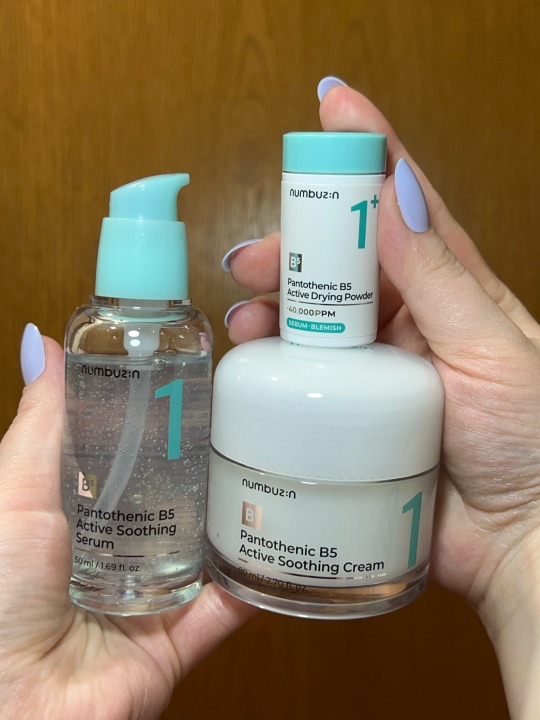

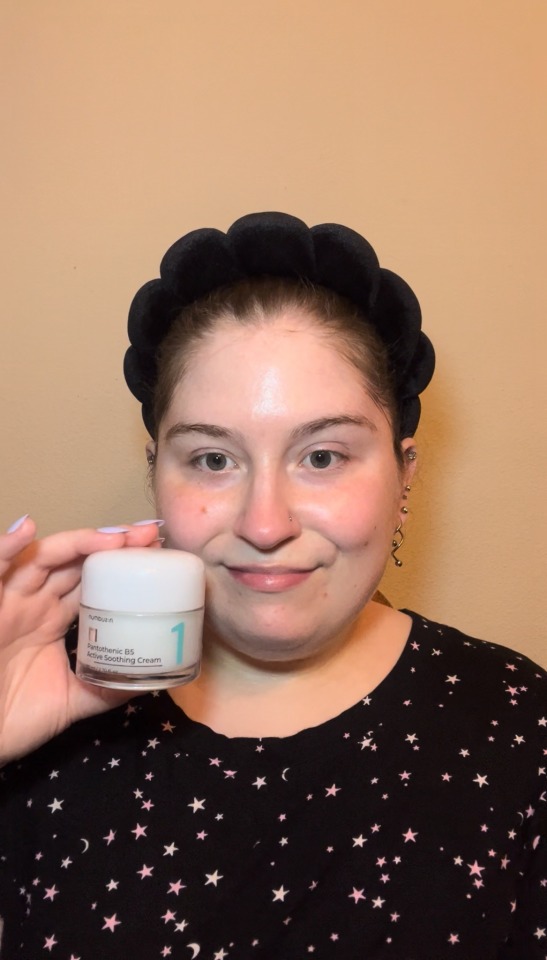
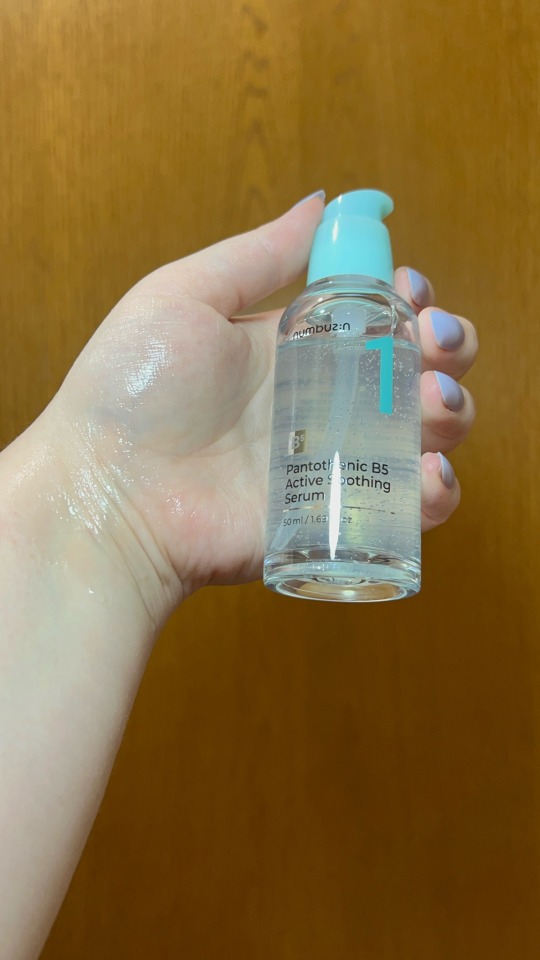
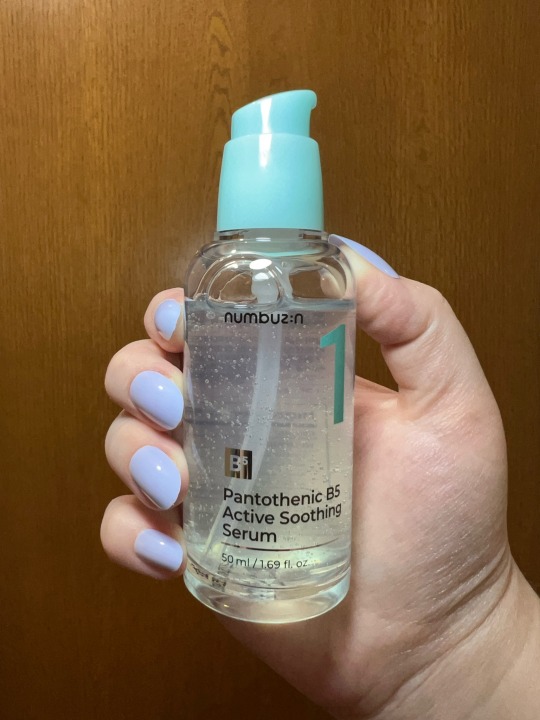

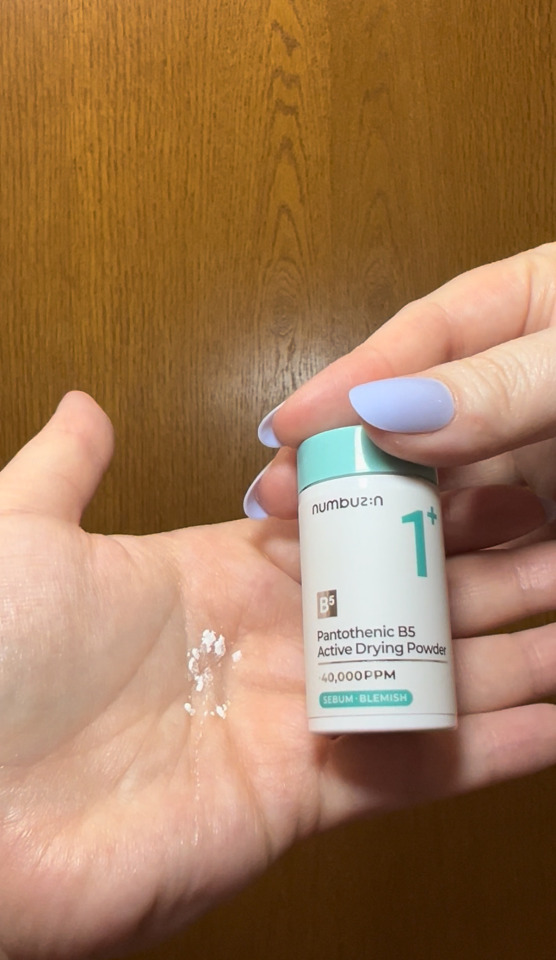


Watch the one minute routine on Instagram or Tiktok.
If you haven’t heard of Pantothenic B5, you more than likely have heard of this ingredient’s other name: panthenol. It’s an ingredient that is well known for helping maintain a healthy skin barrier. Not only does it help your skin maintain its moisture, it also helps promote skin healing which can help acne prone skin as well. It can also help with excess oil that our skin produces. The three products I tried are: a mattefying powder, serum, and cream.
I love the fact that you can mix the powder with the cream for example, so your skin won’t look so shiny. Or you can use the powder by itself to target any oil prone areas (for me that’s my t-zone, or my forehead and nose especially). This is a great alternative to a setting powder or blotting sheets. Even as someone with dry skin, I found that the powder didn’t make my dry skin any more noticeable. The serum is incredibly lightweight, as is the moisturizer. This is another cream where a little bit goes a long way.
You can sign up for Picky to try out this and other Korean Beauty brands with my invite code: 30321C65
https://gopicky.com/MeaningInMakeup
As an Amazon associate, I earn from qualifying purchases. You can buy the powder here: https://amzn.to/3WuCWf8
You can buy the serum here: https://amzn.to/3YtE0Cq
You can buy the cream here: https://amzn.to/46u8TsD
0 notes
Text
Cicaplast Baume B5 Review
Today, we're diving into the ingredients of the Cicaplast Baume B5 and exploring the benefits it can bring to our skin. Let’s get started!
Key Ingredients
This product features several humectants, a couple of emollients, and its star ingredient—Centella Asiatica.
Humectants
The humectants in Cicaplast Baume B5 include glycerin, propanediol, panthenol, and butylene glycol.
Humectants act as water magnets, attracting moisture from the atmosphere and drawing it to the surface of the skin.
This keeps your skin hydrated, which results in soft and plump skin. Hydration is key, and these ingredients help achieve just that.
Panthenol (Pro Vitamin B5)
The reason we have B5 in the product’s name is due to panthenol, also known as pro vitamin B5. This powerful humectant doesn’t just hydrate but also has strong anti-inflammatory properties.
Anti-inflammatory ingredients soothe and calm the skin, reducing redness and irritation. Thanks to panthenol, this product is particularly beneficial for sensitive or inflamed skin.
Emollients
Now, let's talk about the two main emollients in this product—polyisobutene and shea butter. Emollients form a protective layer on top of the skin, helping to lock in moisture and keep the skin feeling soft.
They also prevent moisture loss from the skin’s surface.
That silky, slippery feel you get when applying the product? That’s thanks to dimethicone, which also enhances the product’s texture, making it glide smoothly across the face.
Star Ingredient: Centella Asiatica
The true standout ingredient in Cicaplast Baume B5 is Centella Asiatica, also known as Cica. This botanical herb is known for its multitude of skin benefits.
One key component of Centella Asiatica is madecassoside, which plays a big role in skin hydration.
Madecassoside stimulates the production of glycosaminoglycans—a substance found in the liquid between skin cells. This liquid is essential for keeping the skin hydrated and healthy.
When skin becomes dehydrated, the quality of glycosaminoglycans is compromised.
By stimulating its production, Centella Asiatica improves both the quantity and quality of these compounds, resulting in more hydration. And as we know, hydrated skin is soft and plump.
Additionally, Centella Asiatica has strong anti-inflammatory properties, which calm and soothe the skin, reducing redness and irritation.
A Hydration Powerhouse
This product is packed with high-quality humectants, the hydrating goodness of Centella Asiatica, and emollients to lock it all in.
There’s no doubt that Cicaplast Baume B5 is extremely hydrating for the skin.
Benefits for Eczema-Prone Skin
This product is also beneficial for those with eczema.
Eczema often results from compromised skin hydration, and this product’s ability to stimulate glycosaminoglycans means more moisture and water retention in the skin.
Increased hydration is key to improving eczema-prone skin.
Final Thoughts
If you're looking for a hydrating product that will plump, soften, and hydrate your skin, especially if you struggle with dehydrated or eczema-prone skin, Cicaplast Baume B5 is a solid option.
While its primary focus is hydration, the calming ingredients also help to soothe and reduce redness. All in all, it's a thumbs-up from us!
Below is a video on my YouTube channel about this -
youtube
0 notes
Text
dear, Klairs Rich Moist Soothing Serum – review
Is the weather getting hotter? Splash your face with icy cold water or ask for dear, Klairs Rich Moist Soothing Serum. #Koreanskincare #review

View On WordPress
#arginine#centella asiatica#cruelty-free#dear Klairs#dry skin#for all skin types#Korean skincare#moisturising#panthenol#review#scent: unscented#sensitive skin#serums#sodium hyaluronate#soothing#Sponsored: unpaid#texture: watery gel#vegan-friendly
0 notes
Text
Enhancer Skin Conditioning Gel 100% Aloe Vera and Panthenol
This enhancer skin conditioning gel will make your skin feel soft and refreshed, because it is thoroughly moisturised. Recommended as pre/post-shave conditioner as it eliminates shaving-induced dryness.
Its indregients are: - Aloe Vera - recognised for its moisturising properties.- Panthenol - A member of the Vitamin B family, panthenol is a revitalising conditioner.- Hyaluronic acid - an effective humectant that helps maintain ideal moisture levels. Show a better look with this skin conditioning gel.



0 notes
Text
I learned how to make aftershave myself. At least in theory, so far. The main ingredients are alcohol and hydrolate (distilled water with plant stuff in it). Then you add a little bit of glycerin, panthenol and some kind of helpful essential oil. But that's optional really. Also my local pharmacy won't sell glycerin and panthenol to me without a prescription(???).
Theoretically you could mix vodka and rose water and have a functional aftershave. And in fact I will do exactly that!
#i can easily order that stuff online#i mean glycerin is also used for baking and panthenol is in tons of lotion?#idk why they're weird about it#i just went to them so i don't have to buy 5x what i need
3 notes
·
View notes
Text
Got a little sunburnt today and I cant help but keep touching my boobs because they feel so so warm. I feel like I've said it a million times before but I love the way fresh suntan/burn feels and smells it's so perfect.
#Not like the skin peeling kinda burn but just flushed red. But it's okay I always have panthenol at home#Also my god it feels so good to be gently massaging in cooling gels and toners and whatnot.#pogaduchy
3 notes
·
View notes
Text
Difference Between Body Butter and Body Lotion
This video is about the difference between body lotion and body butter. Body butter, with its opulent texture and higher concentration of natural fats, caters to the needs of dry and sensitive skin, forming a protective shield against dehydration. On the other hand, body lotion, with its lighter composition and versatile ingredients, suits various skin types for daily moisturization, especially in warmer climates.
Website:- https://suroskie.com/products/british-rose-body-lotion
#british rose body lotion#rosehip body lotion#shea butter body lotion#glycerine body lotion#shea and cocoa butter lotion#vitamin e body lotion#panthenol body lotion#sesame oil body lotion#coconut oil body lotion#lactic acid body lotion
0 notes
Text
0 notes
Text
serums are sticky...... not sure if i like that. but at least they're staying on my skin?
1 note
·
View note
Text
Panthenol Price | Prices | Pricing | News | Database | Chart | ChemAnalyst
Panthenol prices commonly known as provitamin B5, is a popular ingredient in cosmetics, pharmaceuticals, and personal care products due to its moisturizing, anti-inflammatory, and healing properties. The global demand for panthenol has been rising consistently, largely driven by its applications in skincare, haircare, and medical formulations. This increase in demand has a substantial impact on panthenol prices, which fluctuate based on various factors such as raw material availability, manufacturing costs, and global market dynamics.
One of the primary factors influencing panthenol prices is the cost and availability of raw materials used in its production. Panthenol is derived from pantothenic acid, a water-soluble B vitamin, and the raw material for pantothenic acid production comes mainly from natural sources. Any fluctuations in the supply of these natural resources directly affect panthenol production costs. For instance, if there is a shortage of the primary ingredients or if the costs of agricultural inputs for these raw materials rise, production costs for panthenol will likely increase. Additionally, any disruptions in the global supply chain, such as those caused by pandemics, geopolitical tensions, or regulatory changes, can also have a significant effect on both the availability and cost of panthenol. As a result, manufacturers may face higher operational costs, which can ultimately lead to an increase in panthenol prices.
Get Real Time Prices for Panthenol : https://www.chemanalyst.com/Pricing-data/panthenol-1601
Furthermore, panthenol prices are affected by regional market dynamics. Countries with high cosmetic and pharmaceutical production, such as the United States, China, Japan, and several European nations, often experience greater demand for panthenol. In regions where panthenol production is lower, imports may be necessary to meet demand, which adds to the price due to shipping and import duties. Moreover, regulatory standards regarding quality and safety in each country can affect panthenol pricing. For example, more stringent regulations in Europe and North America can increase production costs for manufacturers who need to comply with these regulations, while markets with fewer restrictions may offer slightly lower prices. The balance between domestic production capacity and imported supply plays a significant role in determining regional panthenol prices, which are often higher in countries with fewer local production facilities.
The panthenol market is also influenced by trends in the personal care and cosmetics industries, where it is a popular ingredient in products marketed for its hydrating and soothing properties. As consumers increasingly seek out products with naturally derived ingredients, the demand for panthenol has risen. This trend, coupled with the growth of the wellness and self-care industries, drives panthenol’s market demand. Additionally, the popularity of products claiming "clean" or "natural" labels has contributed to the demand for panthenol, as it is often regarded as a safe, gentle, and effective ingredient. When demand surges in these industries, especially during peak seasons for skincare and haircare products, the price of panthenol can increase due to the pressure on supply chains to keep up with the heightened demand. Companies that manufacture skincare and haircare products often buy panthenol in bulk, so any changes in the wholesale price can influence product pricing at the consumer level as well.
Production and processing costs also play a crucial role in panthenol pricing. The extraction and processing of high-quality panthenol require sophisticated equipment and adherence to strict manufacturing standards, especially if the panthenol is to be used in pharmaceuticals or products with medical applications. Ensuring that the panthenol meets the quality and purity standards required for these applications adds to the cost. Additionally, as environmental standards become more rigorous, manufacturers may need to invest in more sustainable production methods, which can further increase operational costs. In such cases, manufacturers may pass these costs on to consumers, resulting in higher prices for panthenol. If a manufacturer is dedicated to minimizing its environmental footprint or adheres to green chemistry principles, these additional steps can also contribute to higher costs and thus a higher price for the end product.
The COVID-19 pandemic had a significant impact on the global supply chains, and the panthenol market was no exception. Many manufacturing facilities were temporarily shut down or operated at reduced capacity, which created supply bottlenecks and shortages. Additionally, increased demand for personal care and health products during the pandemic drove up demand for ingredients like panthenol. Even as the world began to recover, supply chain disruptions and increased transportation costs due to labor shortages and logistic delays continued to affect panthenol prices. These factors have contributed to a volatile market, with periodic price hikes that reflect the challenges in stabilizing supply and demand in the post-pandemic era.
In the pharmaceutical industry, panthenol's role as a healing agent in topical applications has contributed to its steady demand. As more research highlights panthenol’s effectiveness in wound healing, anti-inflammatory benefits, and its ability to enhance skin barrier function, its demand in medical products has increased. The pharmaceutical applications require high-purity panthenol, which is more expensive to produce. This pharmaceutical demand can sometimes lead to higher prices, especially if the demand for medical-grade panthenol spikes due to increased research or newly developed products requiring the ingredient.
Overall, the panthenol market experiences regular fluctuations based on a combination of demand growth in the personal care, cosmetics, and pharmaceutical sectors, alongside the challenges of maintaining a stable supply chain. As companies increasingly focus on natural and multifunctional ingredients, the demand for panthenol is likely to remain robust. However, given the complexity of the factors involved, price trends are expected to continue to reflect these diverse influences, making it a critical ingredient to monitor for businesses and consumers alike.
Get Real Time Prices for Panthenol : https://www.chemanalyst.com/Pricing-data/panthenol-1601
Contact Us:
ChemAnalyst
GmbH - S-01, 2.floor, Subbelrather Straße,
15a Cologne, 50823, Germany
Call: +49-221-6505-8833
Email: [email protected]
Website: https://www.chemanalyst.com
#Panthenol#Panthenol Price#Panthenol Prices#Panthenol Pricing#Panthenol News#Panthenol Price Monitor#Panthenol Database
0 notes
Text
the ultimate guide to glowy, clear skin
so your skin looks great with and without makeup for your summer glow up 🫶🏽



things you should never skip:
- double cleansing at night
- SPF 50 during the day
- spraying a mist before applying hydrating ingredients
- getting 6-8 hours of sleep every night
- washing your hands before touching your face
- washing your pillowcases, hair wraps, and bedding once a week
- using paper towel to dry your face
the main way to have glowy skin? maintaining the skin barrier.
Find everyday products with the following ingredients:
- prebiotics + probiotics
I always use the Axis-Y Biome Radiating Essence
- fatty acids, cholesterols, and ceramides
I always use the Stratia Lipid Gold Serum/Lotion and Aestura Cream
- hydrators: Glycerin, Hyaluronic Acid, Betaine, Panthenol
I always use the Hada Labo Hyaluronic Acid lotion and Mediheal NMF Ampoule Mask
- anti-inflammatories, antibacterials and antifungals: Propolis, Heartleaf, Centella Asiatica, Cica
I always use the Cosrx Propolis Ampoule and Abib Heartleaf Essence
the other part of having glowy skin? minimal texture, radiance, and clear pores.
These are things you’d use 1-2x a week:
- a surface exfoliator: Lactic Acid (darker-skin friendly; is also hydrating), Glycolic Acid
I always use the Paula’s Choice Lactic/Mandelic Acid exfoliator
- a deep exfoliator: Salicylic Acid, EX-07 enzyme, PHAs
I always use the numbuzin no.4 Pore Zero toner pad
- Vitamin A derivatives/alternatives: retinol, tretinoin, bakuchiol, resveratrol
I always use the 23 Years Old Bakuchiol A cream
You can use your surface and deep exfoliators together, but never mix an exfoliator with Vitamin A!
The biggest help to your skin being healthy and clear? Your diet.
EAT YOUR SKINCARE INGREDIENTS (not literally)
What’s going on inside your body reflects directly on your skin - from constipation, to period cycle stage, to lactose intolerance, and more.
The essentials:
• Collagen and Vitamin A
- BB LAB Collagen powder (also has hyaluronic acid and vitamin C)
- Grass-fed Gelatin Gummies
- Country Farms Super Reds
- Leafy Greens, Carrots, Pumpkin, Cantaloupe, Mango
• Prebiotics and Probiotics
- Country Farm Super Greens
- Seed Daily Synbiotic
- Kombucha
- Kefir
- Yogurt
• good ole H20 :)
- at least 64 ounces (8 cups) a day
Wanna keep your skincare routine simple? You’ll only need 5 things.
1. Oil Cleanser (PM only)
2. Gel/Milky Cleanser
3. an all-in-one toner (hydrates, nourishes, calms)
4. a great moisturizer (preferably with fatty acids and ceramides!)
5. SPF
Just make sure your diet, exercise routine, and sleep routine are the best they can be! 💘
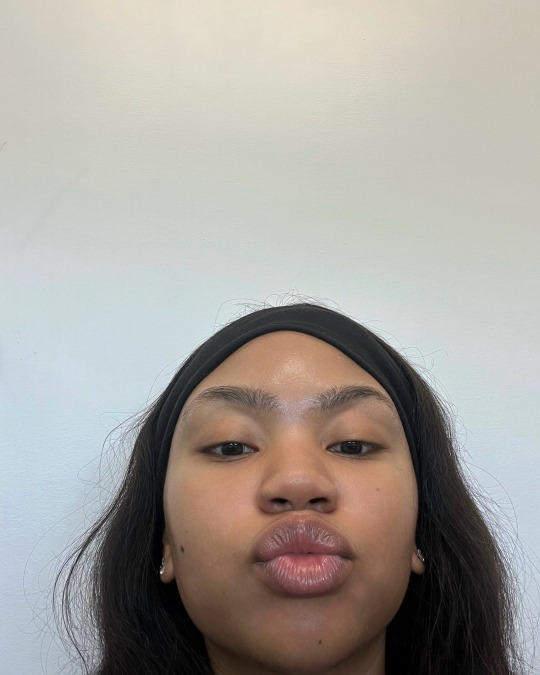


#self care#glow up#glowingskin#skincare#self improvement#it girl#clear skin#glowy skin#becoming that girl#becoming her#that girl
89 notes
·
View notes